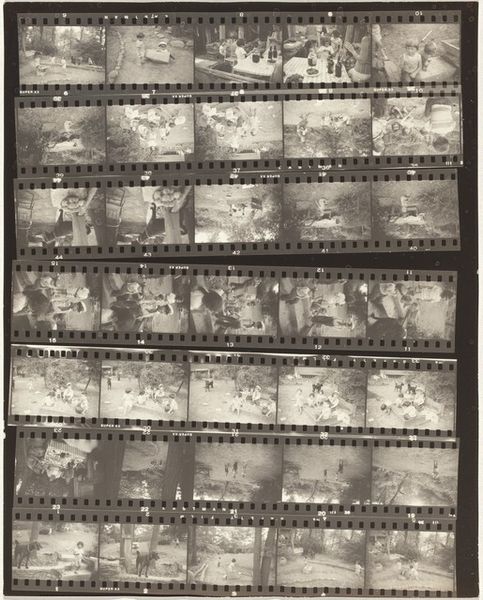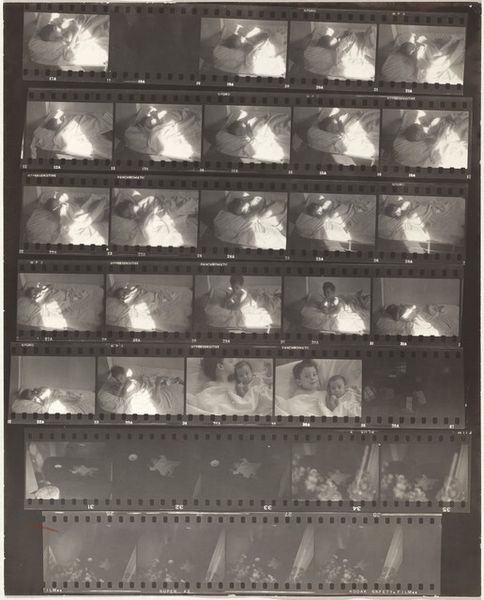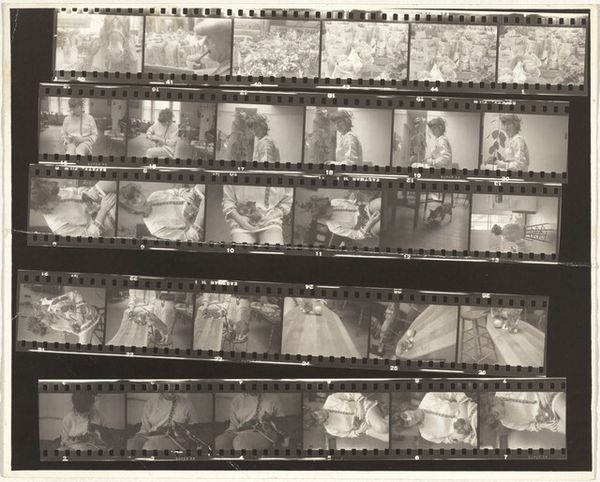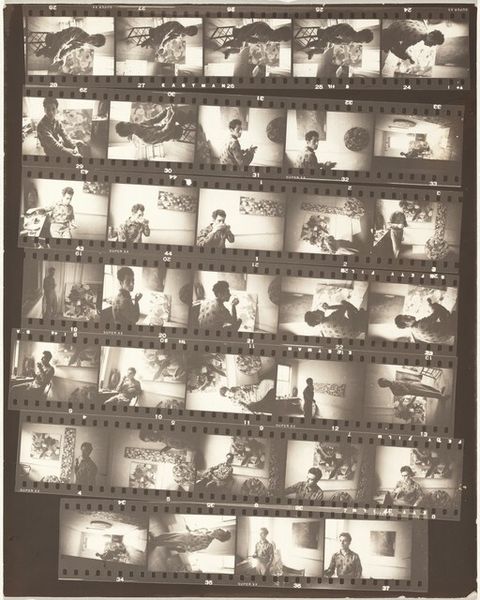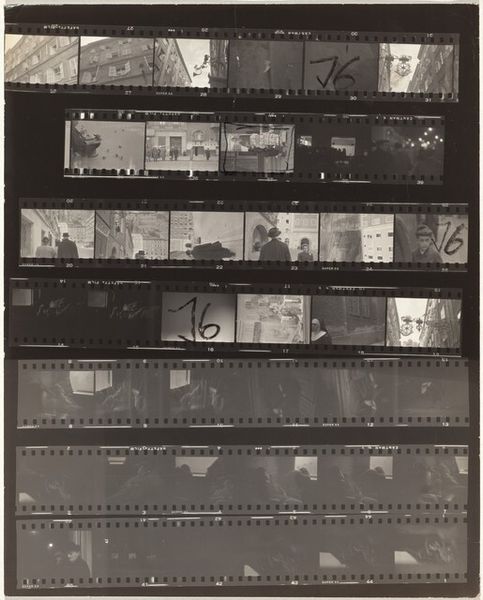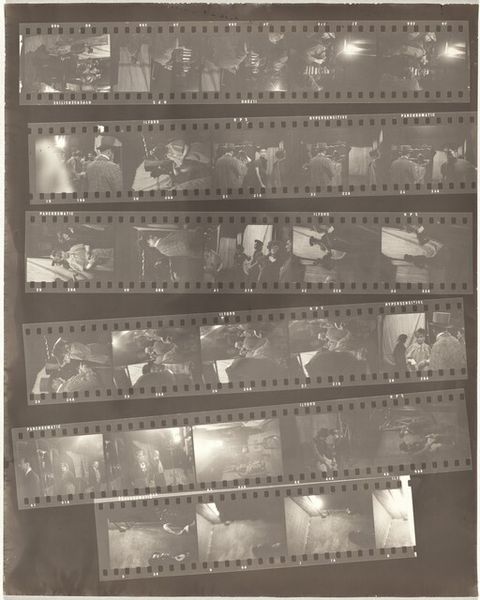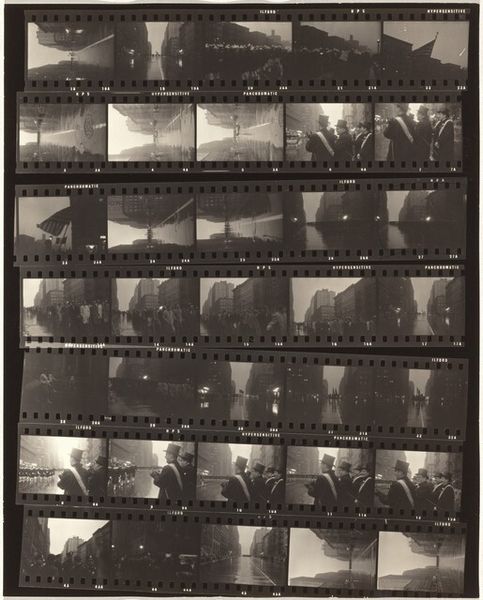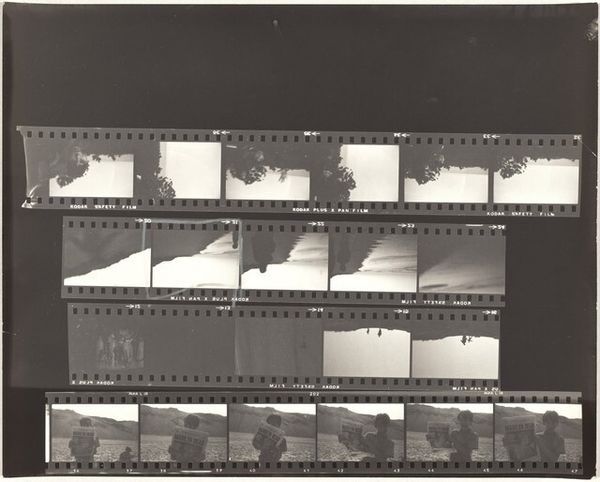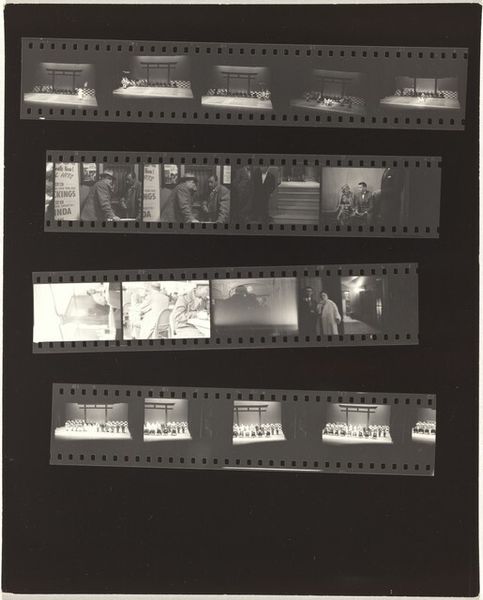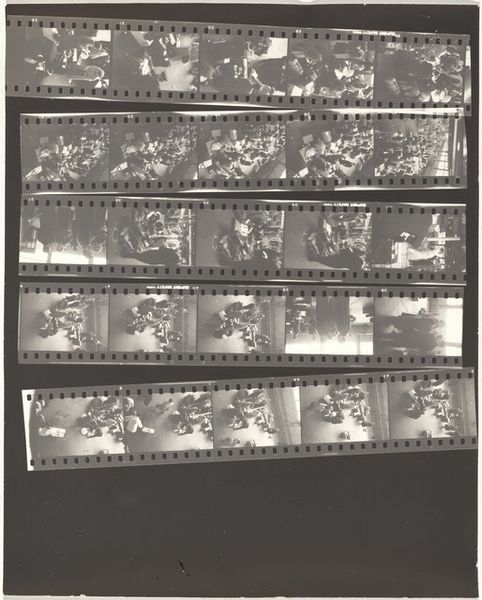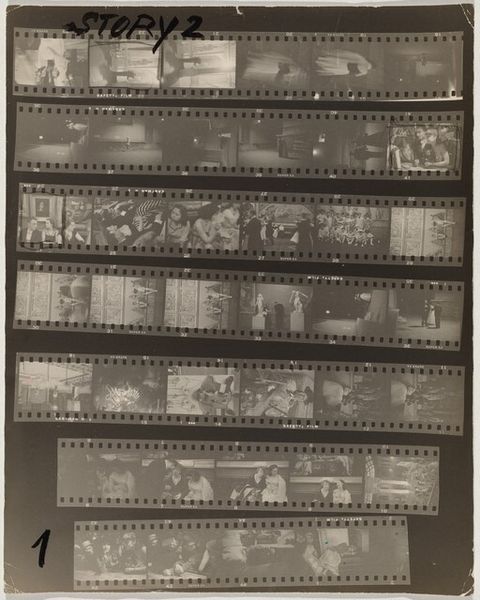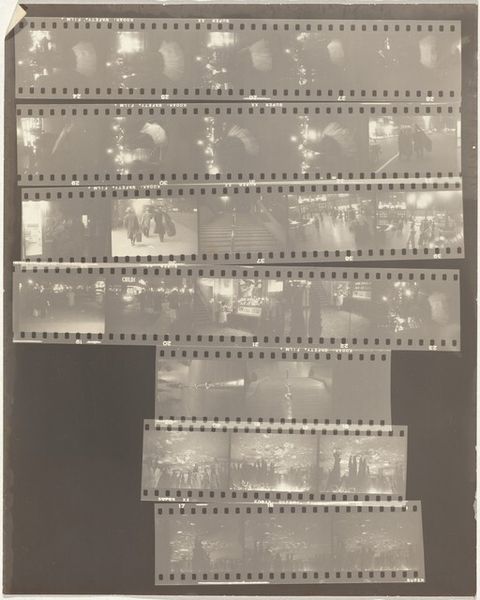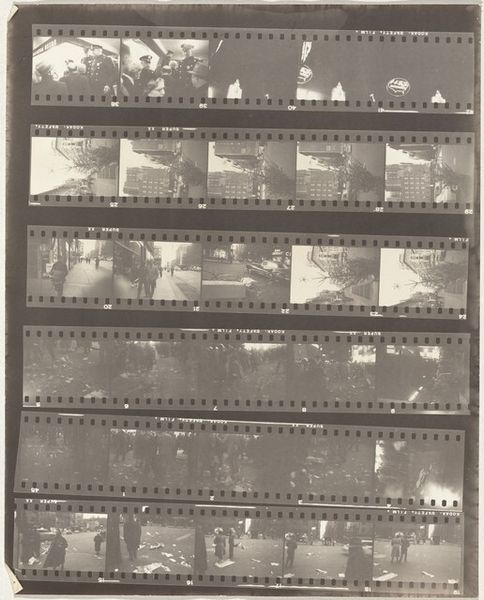
photography, gelatin-silver-print
#
portrait
#
abstract-expressionism
#
self-portrait
#
photography
#
gelatin-silver-print
#
modernism
Dimensions: overall: 25.3 x 20.2 cm (9 15/16 x 7 15/16 in.)
Copyright: National Gallery of Art: CC0 1.0
Curator: Robert Frank captured this fascinating contact sheet of Franz Kline's artistic process in 1962, a gelatin-silver print simply titled, "Franz Kline no number." Editor: My first thought is how intimate and yet distant it feels, peering into Kline's world through the rigid grid of the film roll. It’s like looking at the artist through a series of fragmented memories. Curator: Exactly. The very nature of the contact sheet implies a series of moments in time, and, notably, Robert Frank, as an outsider, can not directly access that. We see Kline interacting with his large-scale abstract expressionist work in the making; his body language seems to echo the boldness and confidence one often assumes of this period and artistic style, but his face reveals the intense, lonely act of painting. It is clearly a space removed from other societal influence, including that of any assumed gaze of Frank's presence. Editor: I agree; the sequential framing really emphasizes the artist’s solitary activity. You mention confidence and, despite it, it seems incredibly vulnerable, perhaps because the camera allows us to witness his more private moments of creativity in the making, uninhibited. As a result, it is possible to identify moments of adjustment to an ongoing product—what about this painting is eluding a solidifying intention? There is also a distinct relationship being conveyed, I think, to ideas around performativity. Curator: Absolutely, thinking through Frank's placement in Klein's studio, how it has influenced Frank, and ultimately Klein—It’s difficult not to consider how the art world creates icons, especially given what followed during the coming years. This shot, in its intimacy and voyeurism, arguably does some of that icon-making here and contributes to a particular mythology around abstract expressionism itself and those involved, whether intended or not. What kind of context did Frank, the photographer, and Klein, the painter, bring to each other’s life? In what way was Frank trying to relate himself, or otherwise to, such a personality? The painting becomes both a window for viewership as well as that of a canvas onto which assumptions could be imposed. Editor: It certainly does reframe the usual narrative surrounding that scene, and prompts essential critical questions. Curator: It does. Hopefully, it'll help audiences reframe the stories they hear about these towering, largely male figures within art history.
Comments
No comments
Be the first to comment and join the conversation on the ultimate creative platform.
